Macular Holes
 In most people between the age of 60 and 70 years, the vitreous gel collapses and causes floaters. In some people, the gel is abnormally firmly attached to the retina, especially in the area of the macula. In these people, the vitreous gel can begin to pull on the macula instead of separating away from the retina and cause small holes to form in the center of the macula. You can demonstrate what happens inside the eye by holding a facial tissue in both hands and slowly pulling it apart until a hole forms in the tissue. In most patients with a macular hole, there is also a fine layer of scar tissue on the surface of the retina that may also pull on the edges of the hole.
In most people between the age of 60 and 70 years, the vitreous gel collapses and causes floaters. In some people, the gel is abnormally firmly attached to the retina, especially in the area of the macula. In these people, the vitreous gel can begin to pull on the macula instead of separating away from the retina and cause small holes to form in the center of the macula. You can demonstrate what happens inside the eye by holding a facial tissue in both hands and slowly pulling it apart until a hole forms in the tissue. In most patients with a macular hole, there is also a fine layer of scar tissue on the surface of the retina that may also pull on the edges of the hole.
Symptoms of Macular Holes
The symptoms driving that you may experience from a macular hole include blurry vision while reading or driving, loss of depth perception, distortion of lines that are supposed to be straight, or a blank area in the center of the field of vision. These symptoms may progress gradually or appear over several days weeks. Macular holes affect both eyes in about 1 of every 10 patients, although one eye may be worse than the other and both eyes are not usually affected at the same time. Another way to say this is that if you have a macular hole in one eye, there is about a 15% chance of developing a macular hole in the other eye. The best way to monitor vision is to look at the Amsler Grid once or twice a week. It is important to understand that many people who develop a macular hole may be unaware of the change in their vision if they do not check one eye at a time by covering the other eye; this is the reason we ask you to check the Amsler Grid one eye at a time.
Diagnosing Macular Holes
As retina specialists, Dr. Kirsch, Dr. Hairston, and Dr. Ho can diagnose a macular hole during a detailed, painless examination of the retina using special lenses and instruments. For most patients, a fluorescein angiogram test is usually recommended to help determine the severity and stage of the macular hole. This test is performed in the office and involves injecting an orange vegetable dye into a vein in the arm and taking black-and-white photographs (NOT X-rays) of the macula An Ocular Computed Tomography (OCT) test will also show the macular hole in great detail and is not invasive. A non-invasive ocular ultrasonogram will reveal whether the vitreous is attached and can also help determine the stage of the macular hole. The doctor will review the results of the fluorescent dye pictures, ultrasonography, and OCT tests with you in detail.
The Progression of Macular Holes
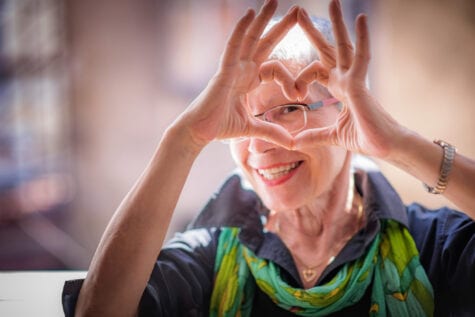 What effect will a macular hole have on your vision? Macular holes progress through four stages and the stage of your macular hole will be determined during your examination. The vision is generally worse as the macular hole progresses from Stage 1 to Stage 4. The loss of sight usually only involves the center portion of your vision and may progress to 20/200 or worse (“legally blind”). You will not normally lose any of the “side” or peripheral vision and therefore will not become completely blind from the macular hole itself. in very rare instances (about 1 in 10,000), a macular hole can lead to a retinal detachment that can cause severe, permanent loss of all vision if untreated.
What effect will a macular hole have on your vision? Macular holes progress through four stages and the stage of your macular hole will be determined during your examination. The vision is generally worse as the macular hole progresses from Stage 1 to Stage 4. The loss of sight usually only involves the center portion of your vision and may progress to 20/200 or worse (“legally blind”). You will not normally lose any of the “side” or peripheral vision and therefore will not become completely blind from the macular hole itself. in very rare instances (about 1 in 10,000), a macular hole can lead to a retinal detachment that can cause severe, permanent loss of all vision if untreated.
Treatment Levels
The treatment your surgeon recommends for a macular hole is custom-designed for your situation. If your vision is still good and the macular hole is in Stage 1, observation is usually recommended. The patient is very carefully monitored with regular examination every 3 to 6 months. You will also be asked to look at your Amsler Grid once or twice per week.
- About 50% of Stage 1 macular holes will get better without treatment because the vitreous gel spontaneously separates from the retina and relieves the pulling force on the macula.
- Once the macular hole reaches Stage 2 (which is partial thickness hole in the retina), surgical treatment seriously considered and may be offered to the patient, because about 75% of the Stage 2 holes will get worse without treatment.
- If a Stage 3 macular hole (a full-thickness hole without vitreous gel separation) or a Stage 4 macular hole (a full-thickness hole with vitreous gel separation) is present, surgery is almost always recommended.
The decision whether to perform surgery is complex and depends upon the level of vision, the stage of the hole, the amount of time the hole has been present, the patient’s overall health, the status of the other eye, and most importantly, the patient’s feeling about whether to undertake the operation. Your surgeon will consider all of these factors and discuss them with you in detail so that together you can decide on the best course of action. Before discussing surgery, it is important to understand that there are no medications, eye drops, vitamins, or laser therapy that can treat a macular hole. Surgery is the only viable treatment.
Surgery Required
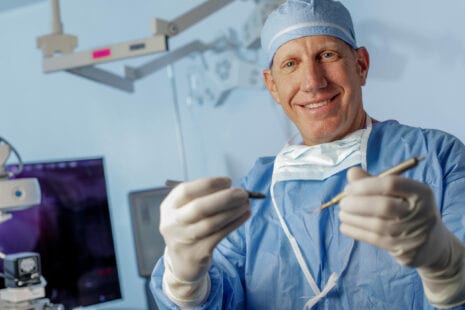 The operation for a macular hole is performed in the Largo Ambulatory Surgery Center and is usually done under local anesthesia. You will go home the same day. The risks of the operation include retinal detachment (occasionally), infection inside the eye (rarely), and bleeding inside the eye (rarely). These complications are treatable most of the time, although as with any surgery inside the eye, loss of eyesight can rarely result. In some patients (about 2%), the scar tissue grows back. If you already have a cataract, surgery will most likely make it worse. The surgery is called a vitrectomy because the vitreous gel inside the eye is removed through three tiny incisions. The vitreous gel is replaced with salt water (the vitreous is like your appendix; you have it but you are sometimes better without it!). The edge of the scar tissue is identified and separated from the surface of the retina. Using special microscopic forceps, the scar tissue is peeled from the surface of the retina like you would peel a label from its backing. The fluid is then removed from the eye and replaced with a special gas that lasts about six weeks. The gas will be reabsorbed and replaced by the body’s own natural saltwater on its own. Two things that are special about the macular hole surgery with gas are:
The operation for a macular hole is performed in the Largo Ambulatory Surgery Center and is usually done under local anesthesia. You will go home the same day. The risks of the operation include retinal detachment (occasionally), infection inside the eye (rarely), and bleeding inside the eye (rarely). These complications are treatable most of the time, although as with any surgery inside the eye, loss of eyesight can rarely result. In some patients (about 2%), the scar tissue grows back. If you already have a cataract, surgery will most likely make it worse. The surgery is called a vitrectomy because the vitreous gel inside the eye is removed through three tiny incisions. The vitreous gel is replaced with salt water (the vitreous is like your appendix; you have it but you are sometimes better without it!). The edge of the scar tissue is identified and separated from the surface of the retina. Using special microscopic forceps, the scar tissue is peeled from the surface of the retina like you would peel a label from its backing. The fluid is then removed from the eye and replaced with a special gas that lasts about six weeks. The gas will be reabsorbed and replaced by the body’s own natural saltwater on its own. Two things that are special about the macular hole surgery with gas are:
- You have to lay on your stomach or on your side with your head down for 7 to 10 days after surgery; and
- You may not go above 4,000 feet in elevation or fly in an airplane until the gas is gone from the eye.
There is an alternative to placing gas inside the eye at the end of surgery. Instead, the eye can be filled with silicone oil. The major advantages of silicone oil are that you do not have to lie on your stomach after surgery (may be asked to lay on one side for one night) and that you can fly in an airplane or drive over an elevation of 4,000 feet. The main disadvantage of the oil is that the doctor has to remove it from the eye about 6 weeks after the initial surgery. If you have a cataract that grows during this time, it may be removed during the operation to take out the oil.
The surgery for macular holes is successful in the vast majority of patients, although it can take from 6 to 12 months for the vision to improve to its final level. About 90 to 95% of macular holes can be closed with the operations described here. Working with your surgeon, you can decide which course of action is best for your situation to preserve or restore the precious gift of sight.
Schedule your Retina Evaluation today
Call (727) 581-8706 to schedule your appointment
Meet Your Retina Care Specialists
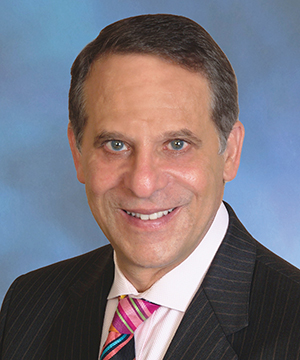 Leonard S. Kirsch, MD is a fellowship-trained vitreous and retina specialist. He is internationally known for the numerous papers and lectures he has presented here and abroad. Dr. Kirsch is currently an active participant in ongoing research to find new treatments for diseases of the retina. His expertise in the most advanced diagnostic and treatment techniques of all diseases of the retina, macula, and vitreous make Dr. Kirsch one of the elites in his field. In the Tampa Bay area, Dr. Kirsch pioneered the use of Photodynamic Therapy with Visudyne©, and intravitreal Macugen©, Lucentis©, and Avastin© for the treatment of age-related macular degeneration. Dr. Kirsch was also among the first surgeons in Florida to perform 25 gauge “no-stitch” vitrectomy in 2001. He is certified by the American Board of Ophthalmology and is a fellow of the Royal College of Surgeons of Canada.
Leonard S. Kirsch, MD is a fellowship-trained vitreous and retina specialist. He is internationally known for the numerous papers and lectures he has presented here and abroad. Dr. Kirsch is currently an active participant in ongoing research to find new treatments for diseases of the retina. His expertise in the most advanced diagnostic and treatment techniques of all diseases of the retina, macula, and vitreous make Dr. Kirsch one of the elites in his field. In the Tampa Bay area, Dr. Kirsch pioneered the use of Photodynamic Therapy with Visudyne©, and intravitreal Macugen©, Lucentis©, and Avastin© for the treatment of age-related macular degeneration. Dr. Kirsch was also among the first surgeons in Florida to perform 25 gauge “no-stitch” vitrectomy in 2001. He is certified by the American Board of Ophthalmology and is a fellow of the Royal College of Surgeons of Canada.
 Richard J. Hairston, M.D. is a vitreous and retina specialist. He joined The Eye Institute in June 2001 coming to us from a busy retina practice in Washington, DC. Dr. Hairston graduated from the Johns Hopkins University School of Medicine and did his residency at the Wilmer Ophthalmological Institute at Johns Hopkins University. He completed a fellowship in diseases and surgery of the retina and vitreous at The Center for Retina Vitreous Surgery, Memphis, Tennessee. He then served as Assistant Chief of Service in Ophthalmology and Director of the Ocular Trauma Service at Johns Hopkins Hospital. Most recently he was Assistant Professor of Ophthalmology at Johns Hopkins University. He is certified by the American Board of Ophthalmology. Dr. Hairston enjoys an international reputation as an outstanding retina and vitreous surgeon.
Richard J. Hairston, M.D. is a vitreous and retina specialist. He joined The Eye Institute in June 2001 coming to us from a busy retina practice in Washington, DC. Dr. Hairston graduated from the Johns Hopkins University School of Medicine and did his residency at the Wilmer Ophthalmological Institute at Johns Hopkins University. He completed a fellowship in diseases and surgery of the retina and vitreous at The Center for Retina Vitreous Surgery, Memphis, Tennessee. He then served as Assistant Chief of Service in Ophthalmology and Director of the Ocular Trauma Service at Johns Hopkins Hospital. Most recently he was Assistant Professor of Ophthalmology at Johns Hopkins University. He is certified by the American Board of Ophthalmology. Dr. Hairston enjoys an international reputation as an outstanding retina and vitreous surgeon.
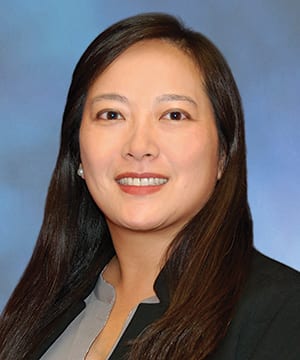 Janie Ho M.D., is a board-certified ophthalmologist, fellowship-trained in medical and surgical vitreoretinal diseases such as macular degeneration, diabetic retinopathy and retinal tears and detachments. She has been educated at some of America’s finest institutions. She received her Bachelor of Arts from Harvard University and her medical degree from Duke University. She went on to ophthalmology residency at the University of California, San Francisco. Following residency, Dr. Ho continued on to a fellowship in vitreoretinal diseases at the prestigious Massachusetts Eye and Ear Infirmary of Harvard Medical School. Dr. Ho has participated in angiogenesis research, investigating causes and treatment for common retinal disorders.
Janie Ho M.D., is a board-certified ophthalmologist, fellowship-trained in medical and surgical vitreoretinal diseases such as macular degeneration, diabetic retinopathy and retinal tears and detachments. She has been educated at some of America’s finest institutions. She received her Bachelor of Arts from Harvard University and her medical degree from Duke University. She went on to ophthalmology residency at the University of California, San Francisco. Following residency, Dr. Ho continued on to a fellowship in vitreoretinal diseases at the prestigious Massachusetts Eye and Ear Infirmary of Harvard Medical School. Dr. Ho has participated in angiogenesis research, investigating causes and treatment for common retinal disorders.
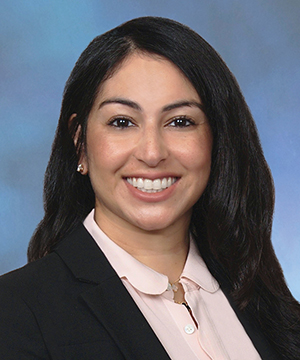 Sejal Shah M.D., is a board-certified, fellowship-trained Retina Specialist. Dr. Shah received her medical degree from the University of South Florida. She began her postgraduate training with an internship in medicine at UCLA, followed by ophthalmology training at the University of South Florida. She went on to complete a fellowship at the prestigious Bascom Palmer Eye Institute, specializing in the diagnosis and treatment of retinal disorders. Dr. Shah also earned a B.S. degree with honors in Nutritional Science from the University of Florida. Dr. Shah brings her expertise as a medical retinal specialist with skills in managing and treating vitreoretinal pathology which including age-related macular degeneration and diabetic retinopathy. Her research has appeared in publications such as Ophthalmic Surgery, Lasers, and Imaging Retina; Clinical Ocular Oncology; Survey of Ophthalmology; International Ophthalmology Clinics; and Survey of Ophthalmology. In her spare time, she enjoys spending quality time with her family and friends, traveling, and trying to keep up with her twin boys.
Sejal Shah M.D., is a board-certified, fellowship-trained Retina Specialist. Dr. Shah received her medical degree from the University of South Florida. She began her postgraduate training with an internship in medicine at UCLA, followed by ophthalmology training at the University of South Florida. She went on to complete a fellowship at the prestigious Bascom Palmer Eye Institute, specializing in the diagnosis and treatment of retinal disorders. Dr. Shah also earned a B.S. degree with honors in Nutritional Science from the University of Florida. Dr. Shah brings her expertise as a medical retinal specialist with skills in managing and treating vitreoretinal pathology which including age-related macular degeneration and diabetic retinopathy. Her research has appeared in publications such as Ophthalmic Surgery, Lasers, and Imaging Retina; Clinical Ocular Oncology; Survey of Ophthalmology; International Ophthalmology Clinics; and Survey of Ophthalmology. In her spare time, she enjoys spending quality time with her family and friends, traveling, and trying to keep up with her twin boys.

